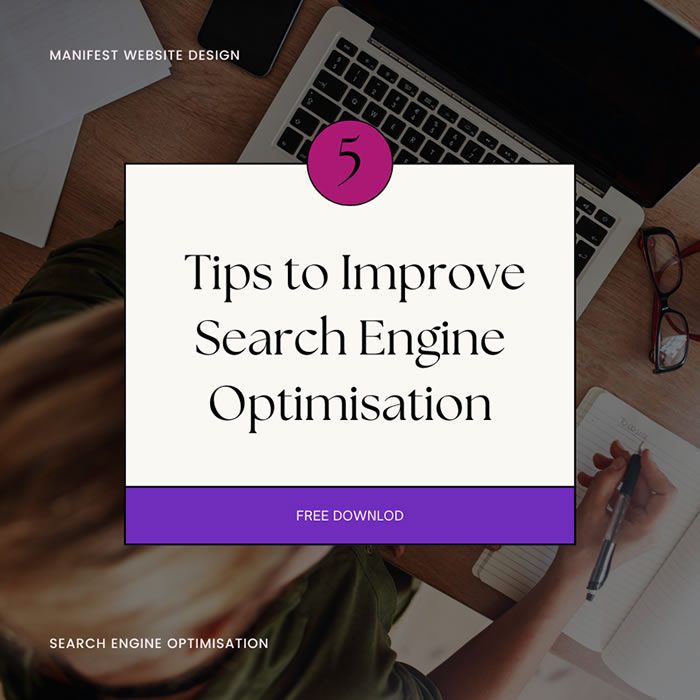How to Make Your Website SEO-Friendly
Published on April 26, 2023
The competition for attention is fiercer than ever. With millions of websites vying for attention, it’s no longer enough to simply have a website. You need a website that follows search engine optimisation (SEO) guidelines and best practices if you want any chance of getting on the front page of Google.
So how can I make my site SEO friendly?
Take things step-by-step. You need to focus on both on-page and off-page optimisation techniques if you want to drive your business’ online growth.
Why Should You Make Your Website Search Engine Friendly?
In such a saturated, competitive digital landscape, copy-pasting your text on a website template will no longer cut it. Your website will most probably not make the cut in the competition of getting on the front page of Google if you don’t put any effort, time, and research into crafting your content.
Making your website search engine friendly is no longer an option but a necessity. With an overwhelming majority of consumers relying on search engines like Google to find products and services they need, businesses in Australia cannot afford to miss out on this valuable source of targeted, organic traffic.
Not to mention an SEO-optimised website is a testament to your brand’s commitment to staying ahead of the curve. Businesses that invest in SEO marketing are more likely to outperform their counterparts who neglect this critical aspect of their growth strategy.
SEO On-Page Optimisation Strategies
1) Keyword Research
Website design agencies who can do keyword research well have the power to propel your website upward in search engine rankings.
Keyword research, at its core, is about identifying search terms that your potential customers use when looking for products and services related to your niche. Here at Manifest Website Design, we like to use SEMrush and Google Search Console to uncover long-tail keywords and semantic variations that give us a competitive advantage.
Once you have a list of generated keywords, it’s time to prioritise which ones you should sprinkle throughout your content. Group them based on relevance, search volume, competition, and your business goals.
Pro tip: Avoid keyword stuffing. Google will know if you do and consequently penalise your website.
2) Metadata Optimisation
This is an often-overlooked yet crucial on-page SEO factor that significantly impacts your ranking. By fine-tuning elements – like title tags, meta descriptions, and headers – you can help the search engine crawlers (I like to call them little robots) better understand your web pages’ content.
Let’s consider a specific example of a hypothetical small business in Australia, “Southern Highlands Organic Café,” and walk through the process of metadata optimisation:
- Title tag: An optimised title tag could be “Southern Highlands Organic Café | Healthy, Delicious Organic Meals & Coffee” which incorporates relevant keywords.
- Meta description: This is a brief summary of the page’s content – “Discover Southern Highland Café’s mouth-watering selection of organic meals, freshly brewed coffee, and vegan-friendly options. Join us for a healthy dining experience in the heart of Australia!”
- Headers: The header tags introduce different sections of the webpage and should naturally integrate relevant keywords – emphasis on naturally.
- Image alt tags: For each image on the page, there should be a textual description like “Southern Highland Organic Café’s signature organic salad with quinoa and roasted vegetables.”
3) Clear Information Architecture
A logical website structure should be intuitive. It allows the little robots of search engines to index your content efficiently and facilitate easy navigation for users, leading to an enhanced overall user experience.
A good website architecture typically consists of a homepage, main category pages, subcategory pages, and individual product or service pages. Keep in mind that one of the best practices of SEO marketing is to implement a consistent internal linking structure.
4) E-A-T Content
E-A-T (Expertise, Authoritativeness, and Trustworthiness) signals are, quite literally, the secret ingredients to satisfying the appetite of both search engines and humans. If you’ve ticked this entire checklist, chances are, your content will be noticed by Google.
Expertise means that you need to demonstrate expertise by conducting thorough due diligence, citing reliable sources, and showcasing your industry knowledge. SEO experts recommend adding author bios to highlight qualifications and expertise.
Authoritativeness entails in-depth, insightful, and high-quality content that addresses your audience’s needs and interests. You need to consistently provide accurate and up-to-date information.
Trustworthiness can be maintained and nurtured through transparency. Display customer testimonials, reviews, and industry certifications.
5) Responsive Design Across Devices
Not everyone uses a desktop. In fact, an overwhelming amount of users across the globe access websites with laptops, tablets, and smartphones. That’s why you need to test your website’s responsiveness on different devices (and browsers) to ensure a seamless user experience.
Related article: Best Ecommerce Platforms For SEO (2023)
6) Visual Appeal
Aside from following your branding guide, it’s also important to use compelling images to complement your content and create visual interest.
Pro tip: Incorporate whitespace strategically to create a clean, uncluttered layout. This improves readable and guides users’ attention.
SEO Off-Page Optimisation Strategies
1) Competitive Analysis
As the name implies, you need to identify what’s working – and what’s not – for your competitors. What keywords and phrases are they targeting? How many quality backlinks do they have? Can you fill in any content gaps?
2) Link Building
If you want to acquire high-quality backlinks to your website, you need to produce valuable, shareable content so that your post will garner more attention both on the web and on social media. Try guest blogging, networking with influencers, and partnering with experts and complementary businesses.
Pro tip: Make directory submissions and local citations part of your SEO marketing budget.
3) White Hat Versus Black Hat SEO Techniques
Do yourself a favour and stick to white hat SEO techniques. These are ethical and sustainable practices that adhere to search engine guidelines, as well as provide real value to users.
Some examples of white hat SEO strategies include creating valuable and original content, optimising metadata, and acquiring organic backlinks through relationship building.
In contrast, black hat SEO involves manipulative practices that violate search engine guidelines in an attempt to artificially boost rankings.
Examples of black hat SEO are keyword stuffing, cloaking (making your font color the same as the background), and purchasing low-quality backlinks. These practices can result in penalties or even removal from search engine results.
SEO Isn’t Happenstance, It’s a Well-Formed Strategy
Optimising your website for search engines is a multifaceted process that requires attention to both on-page and off-page elements. When you prioritise the best SEO practices, you’ll not only stay ahead of the competition, but you’ll also ensure that your users get the best experience possible – ultimately leading to increased conversions and business success.
The thing is, search engine optimisation isn’t easy. It’s a tad bit complicated. It’s time-consuming. It’s a lot to take in. If you find yourself struggling with your online goals, our agency is here to provide support. We offer SEO services, as well as website design services, that cater to your unique needs and objectives. Together, we can unlock your website’s full potential.

ANA AMISTAD
About the Author
Ana is a Content Manager specialising in digital marketing, SEO, and meaningful stories. Her byline is often found 3,000 feet above sea level.
After hours, Ana enjoys psych thrillers, reading, dying in video games, and having a good conversation. You can reach out to her on LinkedIn.






